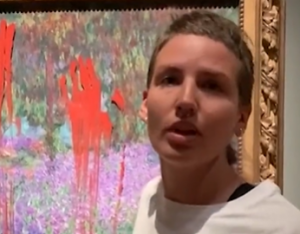A Danish artist has come up with a strange way to protest against low wages as he took up to money to make art for the museum but submitted two blank canvases in return. He has also altered the name of his installation to ‘Take the Money and Run,’ reported the First Post.
Also Read: ‘Cheeky’ Moona Lisa statue goes on public display in Bristol
Jens Hanning, an artist took a cash payment of 534,000 kroner, which roughly amounts to $84,000, to deliver two art pieces to the Kunsten Museum of Modern Art in Aalborg but gave back two blank canvases instead. The original pieces had to have banknotes attached to a canvas as a representation of the average annual wage in Austria and Denmark.
However, when the officials received and checked the artwork, it was blank with no sign of money.
The museum also paid Hanning another 25,000 kroner ($3,900) for the artwork, which was scheduled to be showcased at the museum’s exhibition on money and labour conditions, ‘Work It Out,’ which opened on 24 September.
Also Read: Claude Monet painting unharmed in Netherlands as robbers flee empty-handed
The artist, Hannig vehemently defending his move said that the blank canvases reflect his current work situation adding that he will not return the money.
“The artwork is that I have taken the money. I encourage others who have just as miserable working conditions as I to do the same,” Haaning told P1.
“If they are being asked to give money to go to work, then take the money and run,” Haaning added.
The museum, however, has a mixed reaction to this.
“He stirred up my curatorial staff and he also stirred me up a bit, but I also had a laugh because it was really humoristic,” Lasse Andersson, director of the museum in the city of Aalborg, told the BBC’s Newsday programme.
Andersson further added that the museum is certain that the artist will have to return the money.
Also Read: John Lennon’s 50 year old interview tape auctioned for $58,240 in Denmark
The museum says Haaning has broken the agreement on how to use the money. However, it has not yet been decided whether to report Haaning to the police if the money is not returned before the exhibition ends in January.
Haaning, on the other hand denies having committed a crime and insists he did produce a work of art.
“It’s not theft, it is a breach of contract, and the breach of contract is part of the work,” Haaning told P1.






